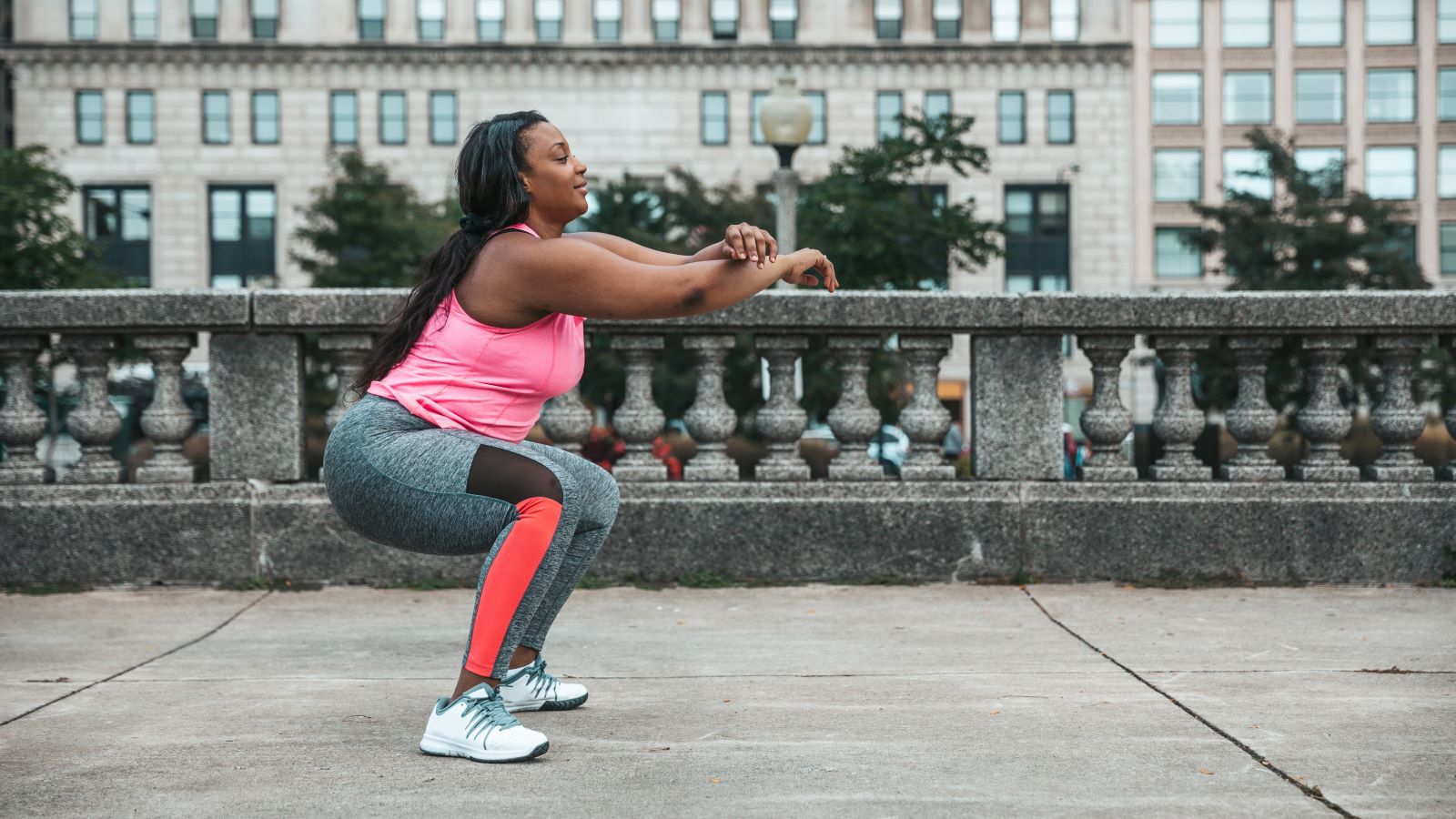<< Back
3 Exercises That Help With Jumper’s Knee

July 15, 2024
Are you struggling with knee pain in front of your knee during activity? You might be suffering from jumper’s knee.
“If you consistently jump, impact load or perform a lot of high-intensity cutting, you have a higher risk of developing jumper’s knee,” explains Bradley Johnson, DPT, a physical therapist with Hartford HealthCare Rehabilitation Network at the Bone & Joint Institute.
Here’s what you need to know about jumper’s knee and how you can treat it.
The pain from jumper’s knee is usually around your knee cap.
Jumper’s knee pain is localized to the patellar tendon. You may feel discomfort off your kneecap (patella) or shin (tibial insertion).
“This overuse injury is usually caused by doing too much activity with insufficient rest or starting a new activity too quickly,” says Johnson.
This mechanical stress to the tendon adds up, especially without enough recovery. Over time, you may feel pain or see a loss of performance.
> Related: What NOT to Do When You Have Knee Pain
If you play these sports, you’re more likely to have jumper’s knee.
Some people are more susceptible to jumper’s knee because of their activity choices.
“It’s most common in people 15-30 years old and usually when playing more organized sports,” answers Johnson.
These activities can include:
- Volleyball
- Basketball
- Long/high jump in track
- Football, tennis or any sport requiring landing, cutting and/or pivoting
If you’re a weekend warrior, it’s less likely to be a problem, but still a possibility.
“It’s possible to develop jumper’s knee,” he says. “But it’s less likely if you rest enough during the week with less activity.”
> Related: 5 Common Types of Knee Braces and How to Pick the Right One for You
Jumper’s knee symptoms to watch out for.
Symptoms may include:
- Pain just off your kneecap or at your shin.
- Pain with stairs, squatting, or sitting for a prolonged time may be present, but not always.
- Load-related pain increases when the demand on the knee increases, specifically plyometric/jumping activity.
“You may also experience a warm-up phenomenon where pain intensifies when you start an activity, improves as you continue and worsens after rest,” Johnson adds.
When diagnosing jumper’s knee, your doctor will do a physical exam and ask about your activity.
“Diagnosis starts with a thorough history discussing symptom behavior and location, your activity schedule and ruling out other possible conditions,” explains Johnson.
While you may not need imaging, your physical exam can help determine contributing factors.
3 exercises to treat jumper’s knee.
If you have jumper’s knee, limit your plyometric activity.
“When your tendons are irritated, they like slow and controlled loading,” says Johnson. “This movement will help build back tolerance for rapid energy storage during jumping and running.”
Need help to build back your strength? Try these three simple exercises:
- Slow-tempo squats with an isometric hold. Hold dumbbell at your chest or just use body weight, slowly lower into a squat, pause at the bottom for 1-2 seconds, then stand back up. Do 8-12 repetitions for 3-5 sets.
- Slant board wall squats. With your feet on a slant board, or your heels raised on a barbell plate, do slow controlled wall squats, sliding up and down the wall. Do 8-12 repetitions for 3-5 sets.
- Isometric holds on the knee extension machine. Using low weight, extend your knee to about 60 degrees and hold for 30-45 seconds for 3-5 sets.
“Continue to stay active with less painful activities like walking and strength training,” adds Johnson. “Physical therapy can also help restore normal tendon function.”
Be smart about your training and when in doubt, see an expert.
“Smart and structured training can help you avoid jumper’s knee in the first place,” says Johnson.
A positive healing environment also helps, and it’s easy to do:
- Get adequate sleep.
- Eat nutritious food.
- Drink enough fluids.
- Prioritize stress management.
“These strategies should help improve things, especially as you avoid aggravating activities,” Johnson says. “If you struggle to manage this alone, see a qualified professional. We can help you return to your favorite activities.”